Places of Myth
39 Mycenae
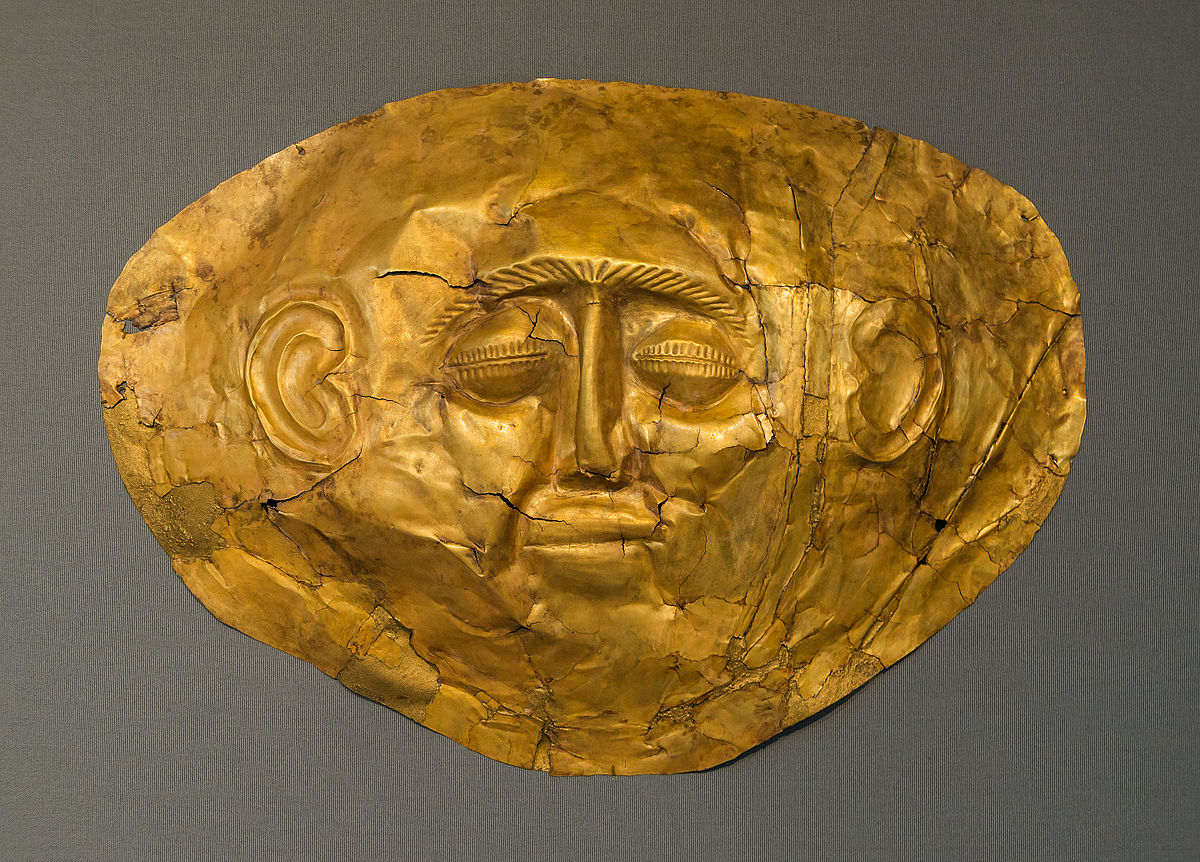
Foundation
Mythological
In mythology, Mycenae was the ancestral stronghold of the dynasty of Perseus, who was the founder and first king of the city. After the sons of Heracles ended the Perseid line, the Atreid dynasty (Atreus, Agamemnon, and eventually Orestes) took the throne.
Historical
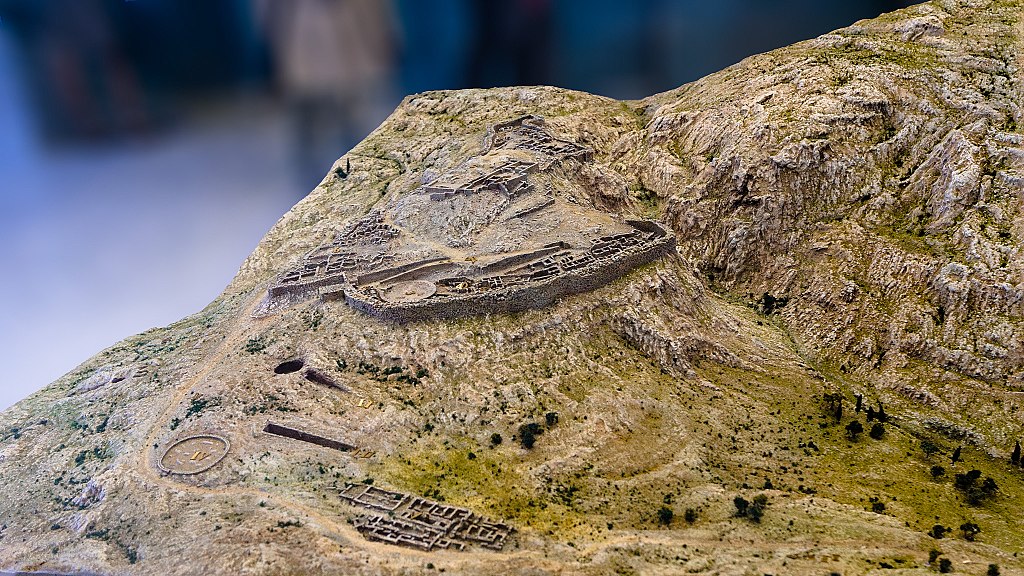
The archaeological record shows that Mycenae had been inhabited since the Neolithic Age, and was one of the most prominent palatial centres of Bronze Age Greece, ruling over a large territory and maintaining trading relationships with many other Mediterranean powers. The citadel contained buildings and graves dating from the 16th to the early 15th century BCE (Grave Circles A and B), as well as several tholos tombs dating from the late 15th to the early 11th century BCE.

The acropolis of Mycenae was fortified during the 14th century BCE with the construction of massive walls, larger palaces, a cistern for water provisions, and more tholos tombs. Like many other Mycenaean sites, the citadel was sacked and destroyed at the end of the Bronze Age, and it never regained its former importance.
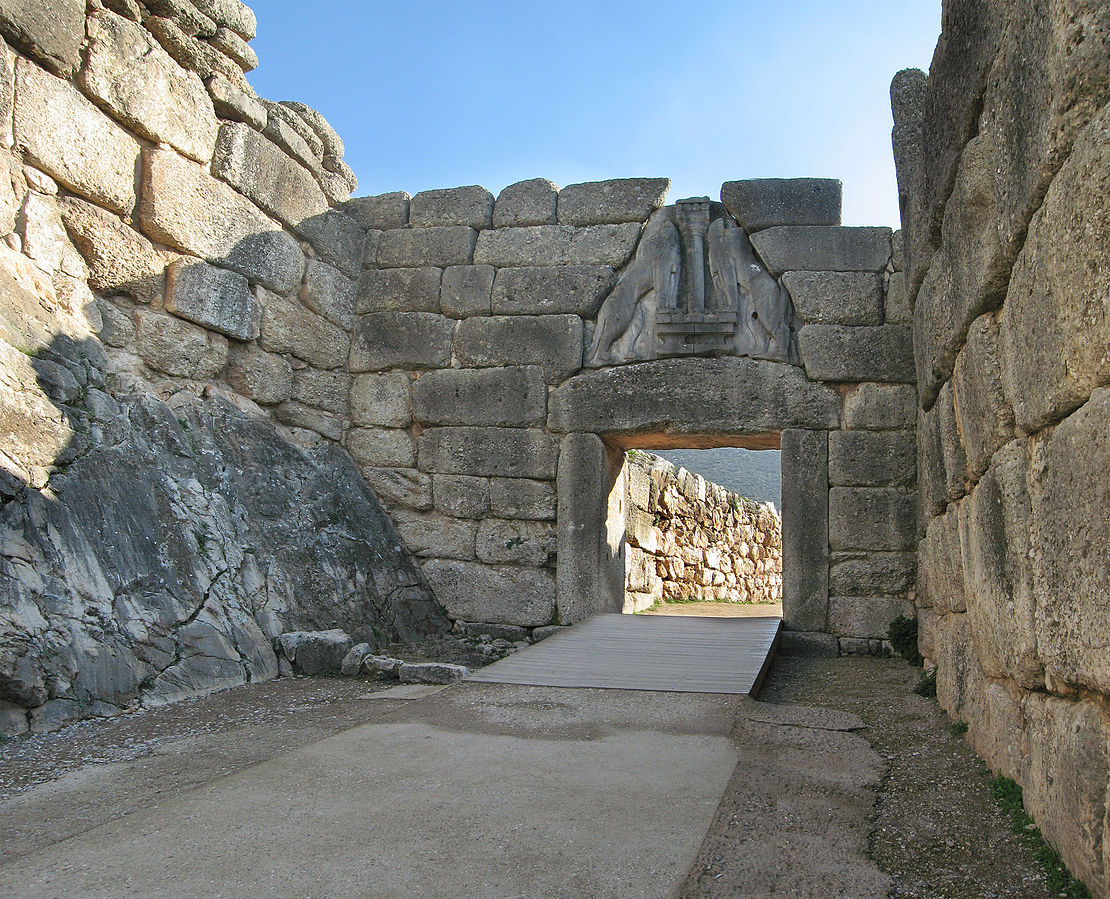
Mythology
Sections & Primary Sources
The Curse of Tantalus
The progenitor of the mythological figures of Mycenae was Tantalus of Lydia, a demigod son of Zeus. In an attempt to prove himself superior to the gods, Tantalus tried to trick them into eating human flesh (the flesh of his own son, Pelops). However, the gods saw through his trick. They resurrected Pelops, and punished Tantalus in the Underworld to be eternally tempted by food but never able to eat or drink.
Tantalus, through his children Pelops and Niobe, was the ancestor of the later rulers of Mycenae. However, because of Tantalus’ crime against the gods, his descendants were cursed with misfortune. Niobe, for example, had all of her children killed by Artemis and Apollo (see chapter 13).
For further discussion of Zeus, the gods, and Tantalus, see chapter 5.
For further discussion of Tantalus in the Underworld, see chapter 41.
The House of Atreus
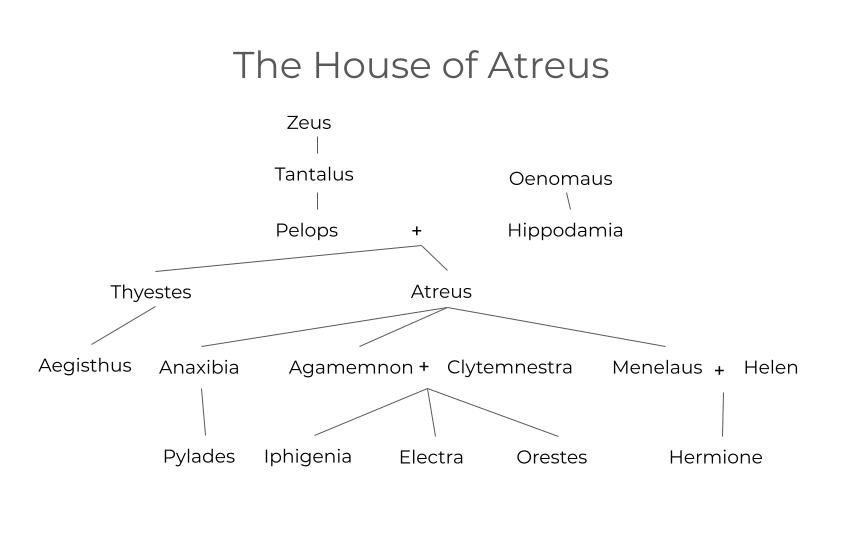
Pelops was the youngest son of Tantalus of Lydia. After being chopped up by his father (see above), he was resurrected by the gods and was abducted by Poseidon to be his lover. Poseidon also provided him with a chariot drawn by exceptionally fast horses. With this chariot, he won the hand of Hippodamia, daughter of king Oenomaus of Pisa. Hippodamia’s father killed all the suitors that lost a chariot race against him, so Pelops used his divine horses and bribed the king’s charioteer to tamper with the axle of his chariot. Oenomaus was killed in the race, and Pelops also killed the charioteer by throwing him off a cliff. As he died, the charioteer cursed Pelops and all his descendants.
Pelops and Hippodamia ruled over most of the western Peloponnesus. He was also credited with organizing the first instance of what would then become the Olympic Games. The royal couple had many children, and Pelops also had a bastard son, Chrysippus, with a nymph. Two of the legitimate sons, Atreus and Thyestes (prompted by their mother), killed Chrysippus. As a consequence, they were cursed by their own father and exiled, alongside Hippodamia.
The two brothers escaped to Mycenae, where they temporarily held the throne of king Eurystheus, who was waging war against the children of Heracles (see chapter 17). When the king died, the two brothers had to decide who would take his place. Atreus found a lamb with a golden fleece and gave it to his wife for safekeeping. It was then decided that whoever had the lamb would be king. However, Atreus’ wife was sleeping with his brother Thyestes, and had secretly given him the lamb. Thyestes therefore became king. Atreus then retook the throne by asking Zeus to perform a miracle for him. At his request, Zeus caused the sun to move backwards in the sky.As revenge on Thyestes for betraying him and taking the throne, Atreus killed his brother’s sons and fed them to him. When Thyestes learned what had happened, he cursed his brother and went into exile. Thyestes raped his own daughter, Pelopia, who gave birth do a son, Aegisthus. Thyestes hoped Aegisthus would avenge him and bring ruin to the descendants of Atreus.When Atreus dies, his son Agamemnon succeeded him on the throne of Mycenae. Agamemnon married Clytemnestra of Sparta, Tyndareus’ daughter and the sister of Helen. Atreus’ younger son, Menelaus, was chosen to marry Helen. Menelaus became the king of Sparta when Tyndareus passed.
For the continuation of the myth of Aegisthus, Agamemnon, and Clytemnestra, see chapter 30.
For the continuation of the myth of Menelaus and Helen, see chapters 25-30 on the Trojan War.
Art and Symbolism
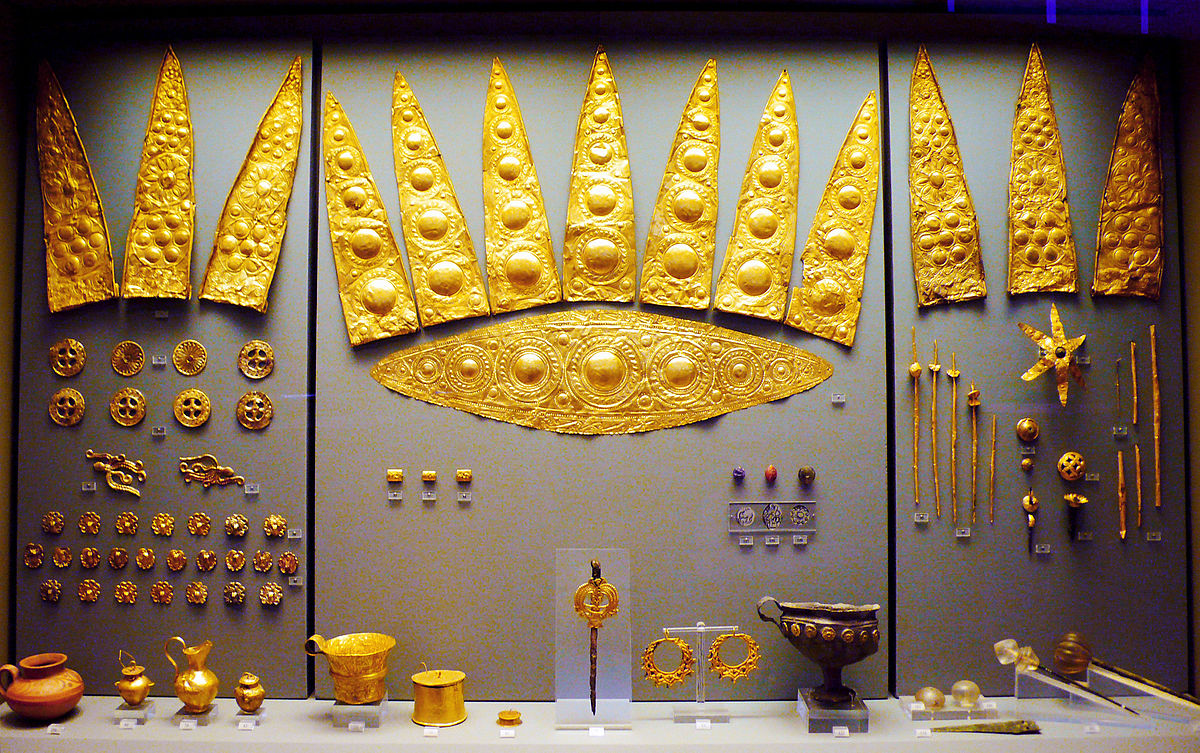
19th century excavations yielded some spectacular finds from the city, and especially from the tombs. The grave goods comprised weapons, armours, pottery, jewels, and golden masks, including what is usually referred to as ‘Agamemnon’s mask’. A large archive of clay tablets inscribed with writing in Linear B containing lists of provisions and offerings were also discovered in the site.
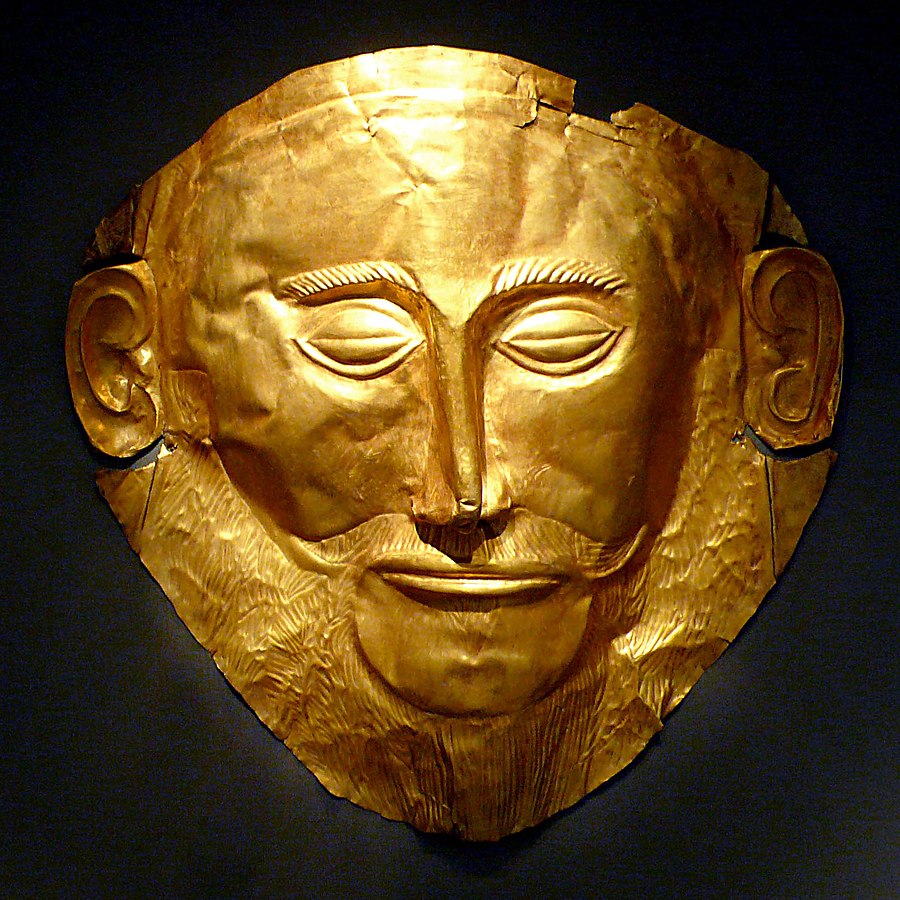
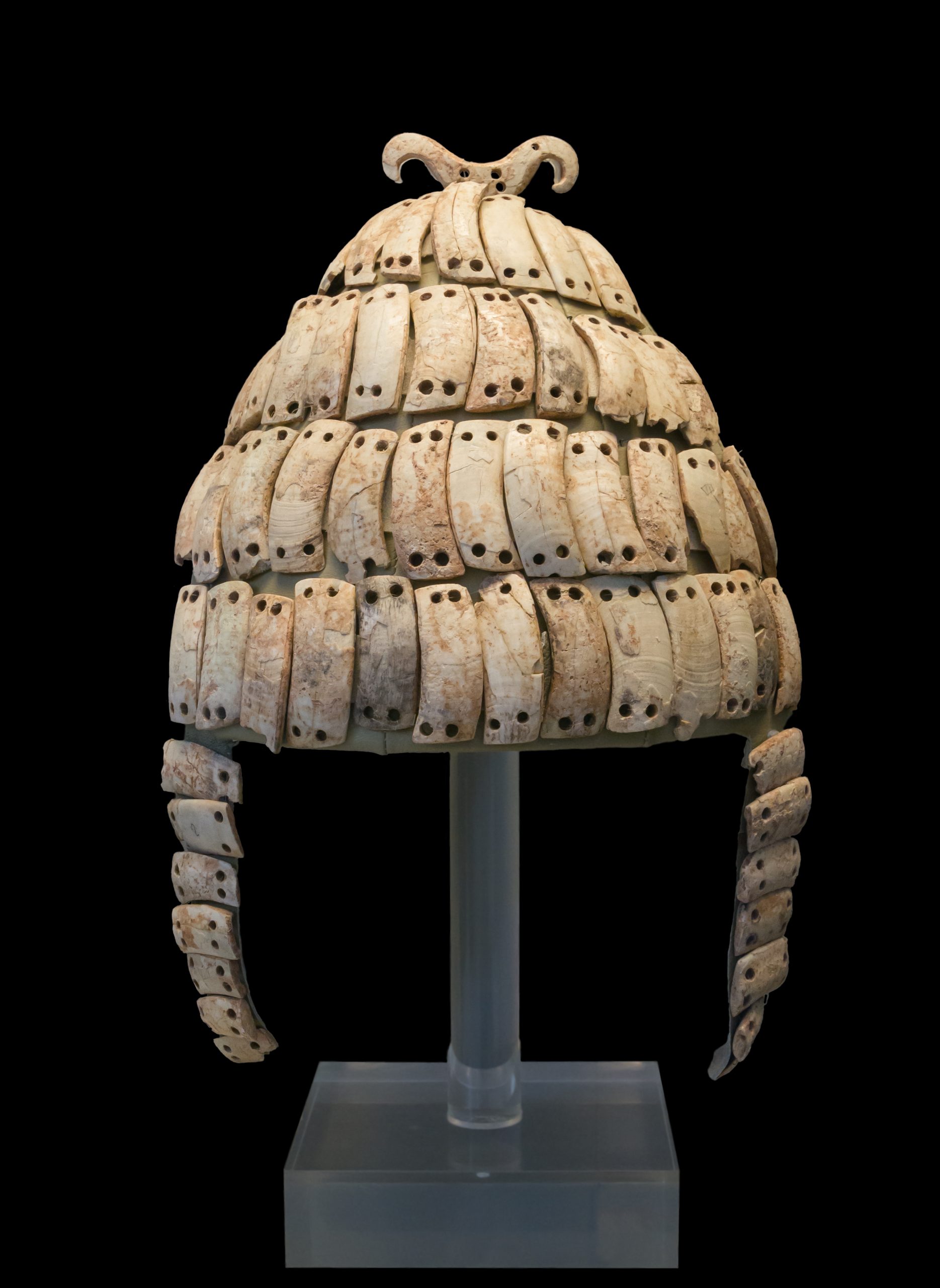
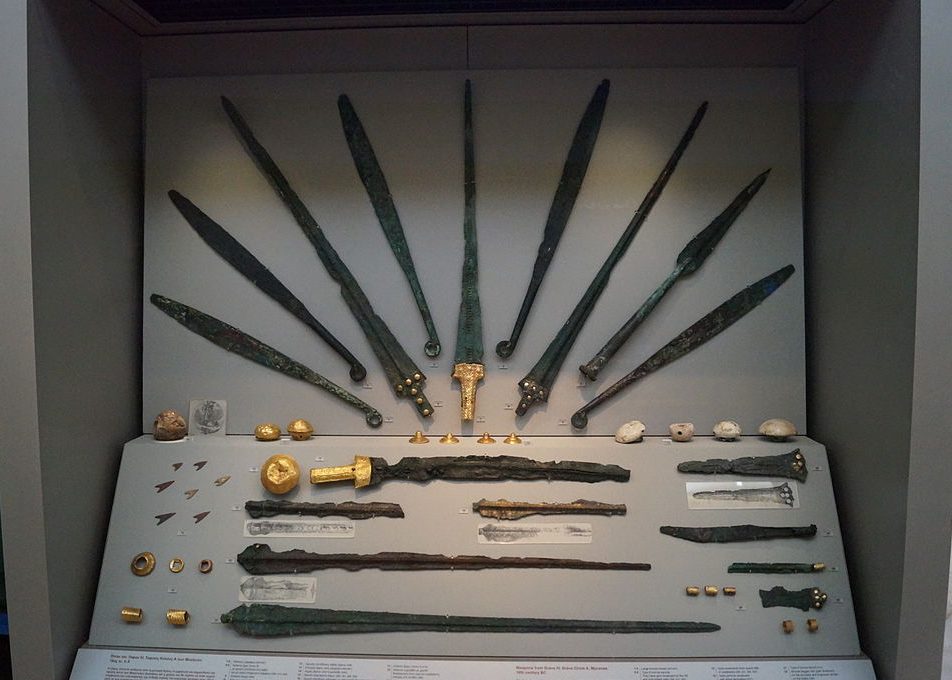
Media Attributions
Media Attributions
- Mycene gold mask 1 NAMA Athens Greece © Jebulon is licensed under a Public Domain license
- Mycenae 3D Plan IMG 7410 © Deyan Vasilev ( Dido3 ) is licensed under a CC BY-SA (Attribution ShareAlike) license
- Interior of Treasury of Atreus, Mycenae, 090945 © Zde is licensed under a CC BY-SA (Attribution ShareAlike) license
- Lions-Gate-Mycenae © Andreas Trepte is licensed under a CC BY-SA (Attribution ShareAlike) license
- Family Tree of the House of Atreus © Luoyao Zhang is licensed under a CC BY-SA (Attribution ShareAlike) license
- MycenaeDiadems © Rosemania is licensed under a CC BY (Attribution) license
- MaskOfAgamemnon © Xuan Che is licensed under a CC BY (Attribution) license
- Boars’s tusk helmet NAMA6568 Athens Greece1 © Jebulon is licensed under a Public Domain license
- Findings from Grave IV (Grave Circle A)(Grave_Circle_A) © Schuppi is licensed under a CC BY-SA (Attribution ShareAlike) license

